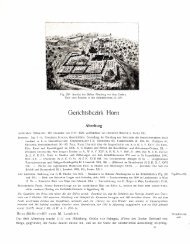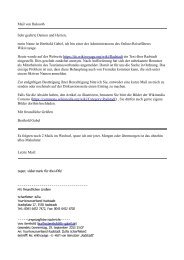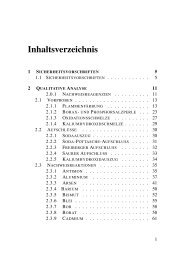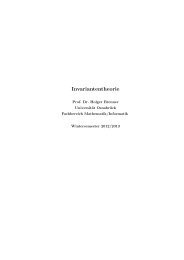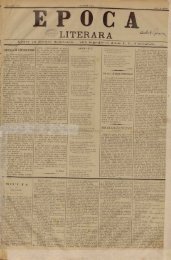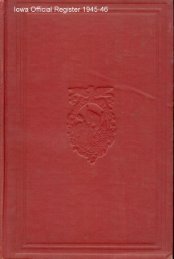Serial Programming - upload.wikimedia....
Serial Programming - upload.wikimedia....
Serial Programming - upload.wikimedia....
Create successful ePaper yourself
Turn your PDF publications into a flip-book with our unique Google optimized e-Paper software.
RS-232 Connections<br />
2.4.5 GND (Signal Ground)<br />
This is an interesting pin to look at. What it does is try to make a common "ground"<br />
reference between the equipment that is being connected to compare the voltages for the<br />
other signals. Normally this is a good thing, because sometimes different pieces of equipment<br />
have different power supplies and are some distance away. The not so pleasant thing about<br />
this wire is that it usually is a physical piece of copper that can conduct electricity that is not<br />
normally supposed to go down the wire, like a short-circuit or worse yet a bolt of lightning<br />
(it happens far more often that you would normally think for this sort of equipment). That<br />
can fry both the DCE as well as the DTE. Things like fiber converters and ground isolators<br />
can help prevent this from happening, but can still be something to worry about. Over<br />
short distances this is generally not a problem.<br />
2.4.6 DSR (Data Set Ready)<br />
This is the counterpart to DTR with the communications equipment (or computer peripheral<br />
on the serial line). When the DTR is sent as a signal, the communications equipment should<br />
change this signal to logic "1" to indicate that it is ready to communicate as well. If the<br />
DCE goes through a "boot" sequence when the DTR gets signaled, it should not signal DSR<br />
until it is complete. But many connectors "hard wire" this pin to be directly connected to<br />
the DTR pin at each end to reduce the number of wires needed in the cable. This can be<br />
useful for connecting devices using existing telephone wires, but prevents applications from<br />
using the DTR and DSR for handshaking.<br />
2.4.7 RTS (Request To Send)<br />
Setting the RTS signal to logic "1" 13 indicates to the DCE that the DTE wants to send it<br />
data. Resetting the RTS signal to logic "0" 14 indicates to the DCE that the DTE has no<br />
more data to send.<br />
2.4.8 CTS (Clear To Send)<br />
This is the response signal from the DCE regarding if the terminal equipment should be<br />
transmitting any data. When this signal is at logical "1" 15 , the terminal is "permitted" to<br />
transmit data. Like the DTR/DSR pins, this one can be directly connected to the RTS pin<br />
to reduce the number of wires needed, but this eliminates the possibility of hardware flow<br />
control. Some software ignores this pin and the RTS pin, so other flow control systems are<br />
also used. That will be explained when we get to actual software.<br />
13 http://en.wikipedia.org/wiki/RS-232C%23Voltage_levels<br />
14 http://en.wikipedia.org/wiki/RS-232C%23Voltage_levels<br />
15 http://en.wikipedia.org/wiki/RS-232C%23Voltage_levels<br />
18



